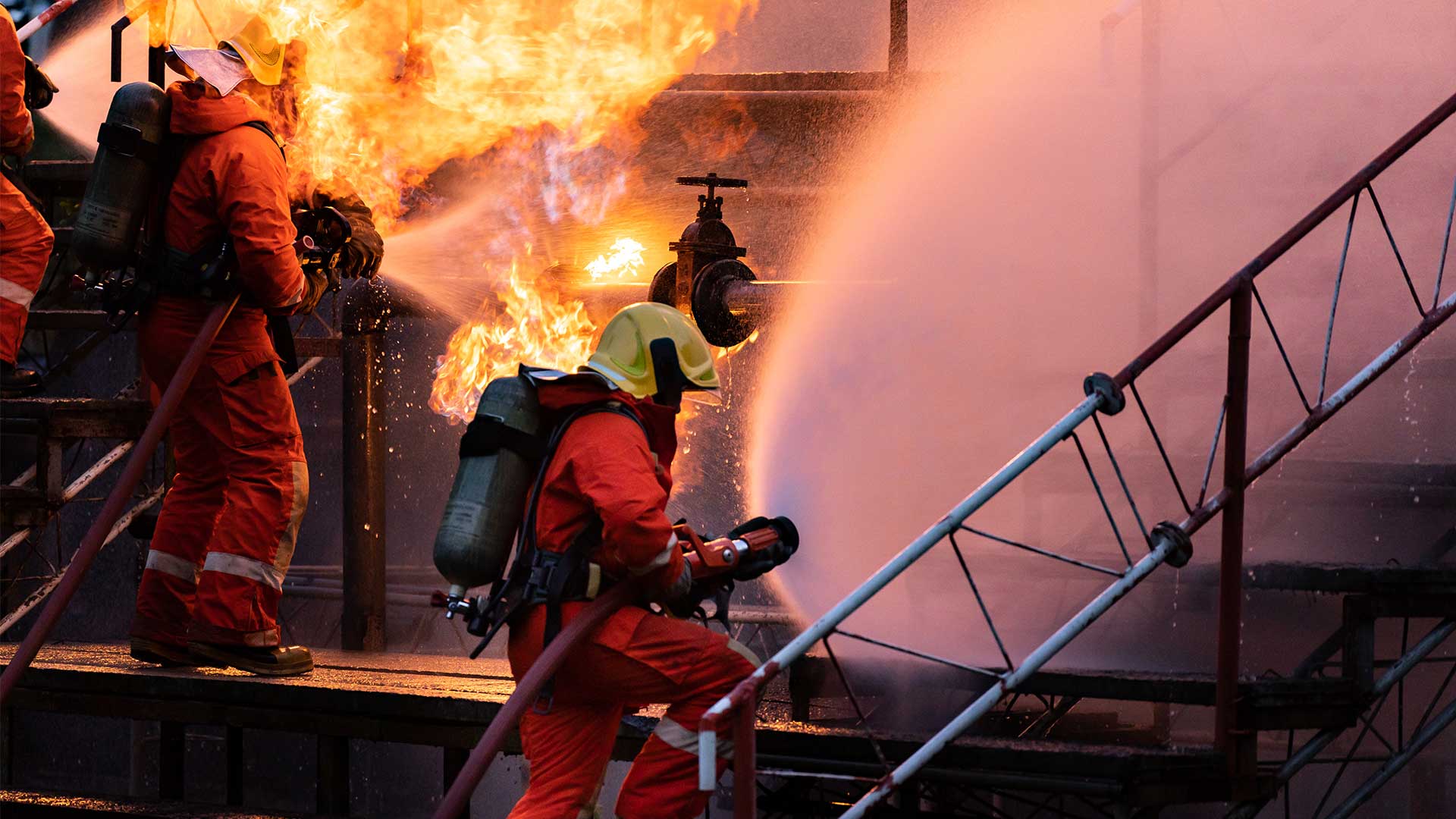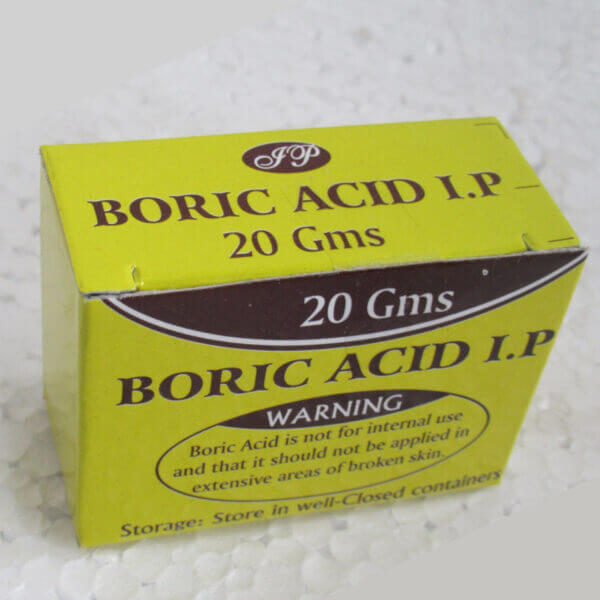
Boron: A Promising Fire Retardant
Boron is a chemical element that can act as an excellent fire retardant. It does not leave harmful residues, and its high cost makes it less desirable for widespread use in consumer products. Still, this property has made it the most effective material to utilize when combating large-scale fires from petroleum or coal processing facilities.
Boron is one of those rare materials with both remarkable qualities, such as being able to function without leaving toxic residue on surfaces where they are used, while also having straightforward applications due to their affordability.
While Boron has many industrial applications, its application as a fire retardant is one of the most important considering the historical use of Boron and its salts for suppressing fire. Let’s take a look at how the element has massively influenced the market of fire retardants.
The role of Boric Acid as a flame retardant
Boric acid can have many different uses depending on what you need it for. Boric acid is commonly utilized by mixing it with other materials such as sugar and water, which makes Boric acid into a delayed-action pyrotechnic composition capable of releasing white smoke during combustion at about 250 degrees Celsius (482°F).
This mixture allows firefighters time to reach locations where they’re needed before there’s any risk from flames. After this compound starts burning, its heat output doesn’t exceed 300 degrees Celsius (572°F), and the smoke released is white and non-toxic.
In previous years, Boric Acid has become more and more popular and started to be known as a natural alternative to chemically manufactured flame retardants. Boric acid has found its niche as an alternative to chemical fire retardants because they’re more environmentally friendly, less flammable, and decompose at lower temperatures, making them safer in high-risk situations.
Is Boric Acid safe?
Boron is a key micronutrient in the cellular structure of plants and most people ingest about 1-3 mg per day as part of their diet. Boric acid, which is also found to be safe for human use by scientists, has been used more often recently due to the green building properties that allow it to make construction easier while preventing toxic chemicals from being released into our environment.
Boron and boric acid have been extensively studied, consistently deemed low toxicity for both animals and humans. Neither are listed as known carcinogens by the U.S Environmental Protection Agency (EPA). In fact, they’re classified as Group E—Evidence of Non-Carcinogenicity because, in studies done with mice, it was documented that there is no correlation between borax or boric acid and cancer.
As with many substances, the ingestion of large amounts of borate and boric acid can be harmful. The poisoning that results from doing so is known as Boric Acid Poisoning which may cause vomiting, diarrhea, and a skin rash. As this toxicity falls below the median lethal dose for table salt in terms of ranking on an index called “The Merck Index,” large amounts would need to be ingested before any harm could come about.
Use of borates to suppress fire
Boron compounds help reduce the combustibility of materials like wood. They work when mixed with boric acid at different ratios by weight. Molecules from borate get absorbed by the polymer, which gives it flame resistance properties while not interfering too much with other material properties such as strength-to-weight ratio, insulation value, and malleability. This mixture can also be applied to many polymers, including PVC foam board which has some benefits over traditional plastic foams.
Borate is an effective flame retardant that prevents combustion. Borates also act as a buffer when neutralizing acid materials and are commonly used to manufacture cellulosic materials such as paper, textiles, or building insulation to prevent corrosion.
Furthermore, boron compounds inhibit glowing and smoldering, which will help slow down smoke production during fires even more so than other fire suppressants can do on their own because they have synergistic value with various substances by suppressing both hot flames and cooler burning material where harmful gases like carbon monoxide may be produced from incompletely burned fuel particles instead of being released into the atmosphere. When carbon is heated, it can form volatile and flammable gases that will slowly decompose the solid masses via pyrolysis. These decays occur until only a carbon structure remains.
How do borates work as a fire retardant?
Cellulosic materials combust in two phases. In the first phase, flames are visible and can be extinguished with water. Still, if you let them smolder for too long, they become a gaseous state that is impossible to extinguish without chemical retardants or putting out all sources of ignition. Flame retards work by containing heat from igniting the material, so it doesn’t have enough energy left over after being lit on fire to keep going as well.
Flame retardants refer to chemicals added so that the treated material will not support flaming combustion after the igniting flame is removed. In contrast, smoldering retardants refer to a chemical that effectively prevents it from burning at all – both during and following an ignition source. Smoldering fires are much more dangerous than their fiery counterparts due to their potential for transition into blazing flames as soon as there’s another spark of some kind or if oxygen levels rise even slightly in your vicinity.
Benefits of Borates
Borates are used as a buffer when neutralizing acidic materials. It acts like an anticorrosive to protect metals in cellulosic substances and it prevents flame combustion, promotes char formation where glowing or smoldering can occur, suppresses the color of smoke so that people’s visibility isn’t impaired by the fire. The synergy with other fire retardant agents makes this chemical substance even more effective at suppressing unwanted flames than most others are on their own.
Borates offer various benefits when it comes to fire safety, depending on which type you choose. Sodium borates can release water from their crystalline structure and act as both a fire retardant or smolder suppressant in the case of boric acid. Boric acid also offers this benefit but releases water that helps extinguish the flame while providing char forming value due to its presence within cellulose materials.
Borax as a Fire Suppressant
Borax is a naturally occurring mineral most commonly found in arid environments and can be used as an effectual fire suppressant. Its chemical composition consists of boron oxide (B2O3), sodium hydroxide (NaOH), and water-soluble potassium salt typically composed from potash or wood ashes.
The use of Borax to suppress fires dates back many centuries ago when the ancient Persians first discovered it. They would sprinkle it on their carpets before they lit them for protection against sparks catching alight due to droughts caused by wind drafts blowing through gaps between buildings.
Borax extinguishes fires by forming an insulating layer of borate glass. Boron, which the mineral contains in its makeup, reacts with oxygen and moisture to produce this fire-fighting protective barrier when heated up or contacted with water vapor or misty air. Its composition includes four elements: sodium; oxygen; hydrogen; and boric oxide – what we call “borate” as it provides protection against wildfires at home through chemical reactions described above during exposure to heat/fire conditions.
What are fire retardant coatings?
Fire retardant coatings are used to help protect structures from the damaging effects of fire. They act as a barrier between combustible materials and the heat source, which in turn reduces or eliminates potential damage caused by fires. Fire retardant coatings work on all surfaces including wood, steel, and concrete; they can also be applied over existing paint jobs without affecting color appearance or texture.
The coating’s effectiveness is dependent upon its thickness – thicker coats will provide more protection than thin ones- but it should not exceed 1/4 inch in order for fuel vapors that spread during ignition to escape through pores underneath before igniting flames above them
Boron-based fire retardant coatings are non-flammable chemicals that can help prevent a building from catching on fire. Boron compounds react with inorganic materials to produce an arid, hard finish and be easy and safe for application onto combustible surfaces such as wood or metal sheathing. Boron-containing fire retardant coatings have been used on certain construction materials and are applied to the surface as a protective layer.
There is some debate in the media over whether or not these boron compounds pose any health risk. However, all the studies and long-term effects of handling Boron have not caused any side effects and attested to the safety of the product. Additionally, it’s worth noting that they do not create smoke when heated up like other standard products such as polyurethane foam insulation often found in homes today.
Moreover, the initial phase of fire always occurs on the surface by ignition. This is why it’s important to concentrate on a material’s protection from its outermost layer. Being of an organic nature means that conventional coatings can burn easily and produce smoke as well as toxic fumes which may not be suitable for applications where fire safety or prevention are required; conditions like these deserve consideration when assessing both flammable materials with protective coatings (like flame retardants) and non-flammables ones with some kind of resistance against heat (such as what you would find in paint).
It could be due to its water solubility property which causes it also to evaporate at high temperatures before ignition can occur; for this reason, boric acid has been widely touted by many experts as one of the best options available for protecting from fires while being environmentally friendly.






